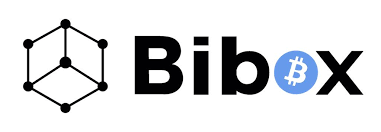Cryptocurrency mining has become an increasingly popular way for individuals and businesses to profit from the digital currency revolution. Verge, a privacy-focused cryptocurrency, has gained significant attention in recent years. However, before jumping into Verge mining, it’s crucial to assess its profitability and understand the factors that can influence it.

Overview of Verge
Verge, also known as XVG, is a decentralized cryptocurrency that prioritizes user privacy and anonymity. It was created in 2014 under the name DogeCoinDark and rebranded to Verge in 2016. Verge aims to provide secure and untraceable transactions by utilizing technologies like Tor and I2P to obfuscate IP addresses.
Proof of Work vs. Proof of Stake
Before discussing the profitability of Verge mining, it’s important to understand the two primary consensus algorithms used in cryptocurrency mining: Proof of Work (PoW) and Proof of Stake (PoS).
PoW is the most common mining algorithm, used by cryptocurrencies like Bitcoin and Verge. Miners solve complex mathematical problems to validate transactions and add them to the blockchain. This process requires significant computational power and electricity, making it resource-intensive.
On the other hand, PoS allows users to mine or validate block transactions based on the number of coins they hold. It is less energy-intensive compared to PoW but requires a considerable investment in the cryptocurrency itself.
Profitability factors
Several factors impact the cost-effectiveness of Verge mining, including hardware costs, electricity expenses, mining difficulty, and the price of the coin itself.
- Hardware costs
Mining Verge requires specialized hardware known as ASICs (Application-Specific Integrated Circuits) or GPUs (Graphics Processing Units). ASICs are more efficient but expensive, while GPUs are more affordable but less efficient. The initial investment in hardware can significantly impact mining profitability.
- Electricity expenses
Mining Verge consumes a significant amount of electricity, which directly affects profitability. Areas with lower electricity costs are more favorable for mining. It’s essential to calculate the electricity expenses and consider the local electricity rates before starting Verge mining.
- Mining difficulty
As more miners join the network, the mining difficulty increases. Higher mining difficulty means it takes more computational power and time to solve the mathematical problems. This can reduce mining profitability, as it requires more resources to mine the same amount of Verge.
- Verge price
The value of Verge in the market directly impacts mining profitability. If the price of this token increases, mining rewards become more valuable. Conversely, a decrease in this coin’s value can make mining less profitable. It’s essential to keep track of its price trends and market conditions.
Calculating Verge mining profitability
To calculate the cost-effectiveness of Verge mining, you can use online mining calculators that take into account factors like hardware costs, electricity expenses, and mining difficulty.
First, determine the hash rate of your mining hardware. The hash rate refers to the computational power of your mining equipment, measured in hashes per second (H/s). The higher the hash rate, the more calculations your hardware can perform, increasing the chances of mining Verge.
Next, consider your electricity expenses. Calculate the power consumption of your mining equipment (in watts) and multiply it by the number of hours it runs per day. Then, multiply this by your electricity rate (per kilowatt-hour) to determine the daily electricity cost.
Once you have these numbers, you can use an online mining calculator to estimate your daily, weekly, monthly, and yearly mining earnings. These calculators consider factors like the current Verge price, mining difficulty, and block rewards.
Profitability challenges
While Verge mining may seem profitable, several challenges can impact its sustainability and profitability:
- Increasing mining difficulty
As more miners join the network, the mining difficulty increases. This can result in diminishing returns, as the resources required to mine this token increase over time.
- Energy consumption
Cryptocurrency mining, including Verge mining, consumes a significant amount of electricity. This can lead to high energy costs, making mining less profitable, especially in regions with expensive electricity rates.
- Market volatility
The cryptocurrency market is highly volatile, with prices fluctuating rapidly. A sudden drop in its value can significantly impact mining profitability, potentially leading to losses if not managed properly.
- Hardware obsolescence
Mining hardware becomes outdated and less efficient over time. As newer, more powerful hardware is released, older equipment may struggle to compete in terms of mining efficiency. This can reduce mining profitability and necessitate regular hardware upgrades.
Final thoughts
While Verge mining can be profitable, it’s important to carefully consider the various factors that can impact its profitability. Assessing hardware costs, electricity expenses, mining difficulty, and the price of the coin is crucial before venturing into Verge mining.
Moreover, it’s essential to stay updated on market trends and adjust mining strategies accordingly. Regularly evaluating profitability and making informed decisions regarding hardware upgrades and electricity consumption can help maximize mining profits in the long run.
You can also find these articles helpful
Is it profitable to trade Verge?
Advantages and disadvantages of Verge
Best altcoins in 2023











